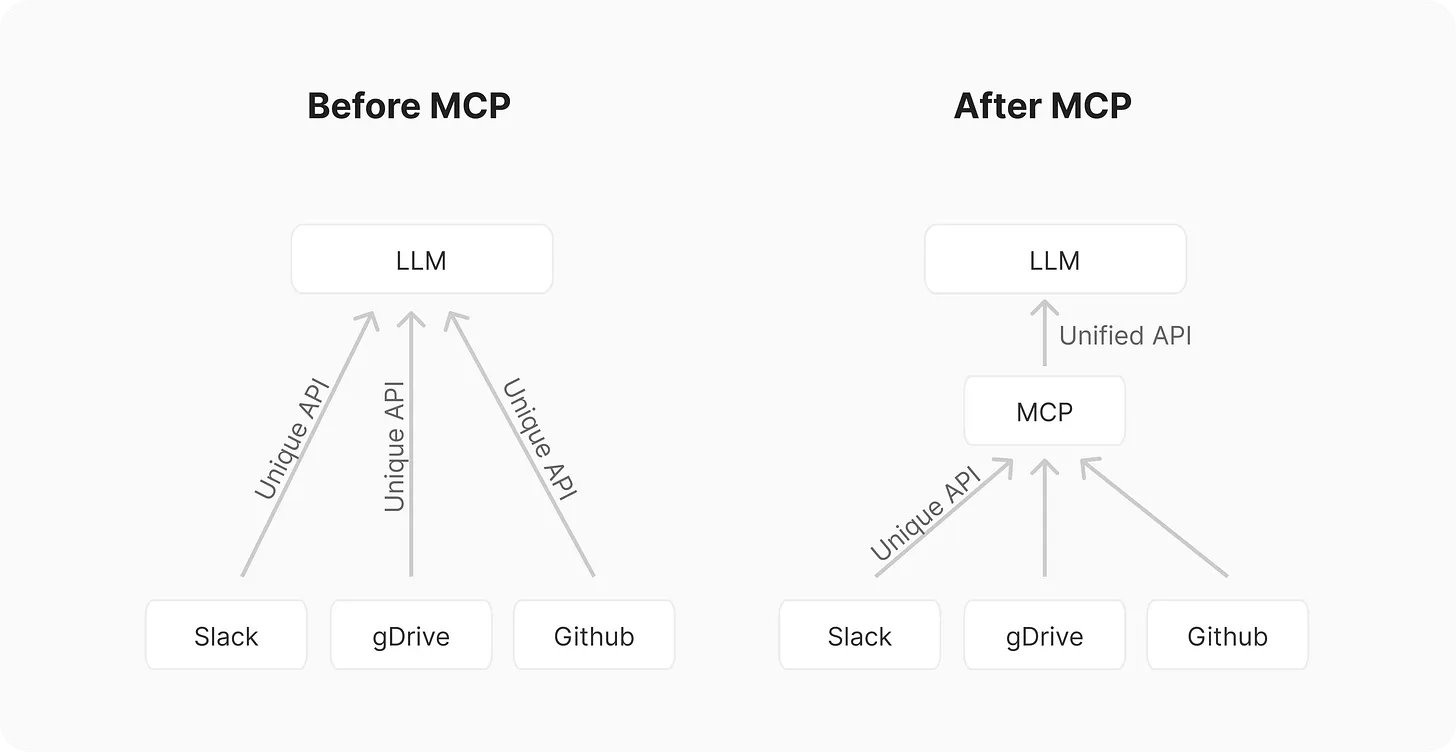Overview
The Model Context Protocol (MCP) is an open, vendor-neutral spec that lets any AI agent call any tool or data source through a uniform JSON/HTTP interface—think USB-C for AI. By standardising the handshake, auth, and invocation format, MCP removes the bespoke glue code that normally couples each model to every integration. Today the protocol is already baked into OpenAI’s Responses API, Microsoft Copilot Studio, Google Gemini CLI, and dozens of third-party servers listed in Anthropic’s directory. ContexaAI sits on top of this ecosystem, giving you a one-click way to create, deploy, and compose MCP servers so your agents can focus on reasoning, not plumbing.
What exactly is MCP?
Definition & spec
MCP is a JSON-RPC–style protocol that defines:- Handshake – the client announces supported schema versions & authentication; the server returns its tool manifest (functions, arguments, docs). (Links)
- Roots – optional scoped access boundaries that tell a server which files, databases or tenants it may touch.
- Invocation – a single
/invokeendpoint where the client calls a tool with structured arguments and receives a typed response or stream. - Auth & consent – layered around OAuth 2 / JWT plus an optional consent step so users can selectively grant tools.
If you’ve ever written a bespoke “/v1/tools/slack.postMessage” wrapper for each model: MCP turns that into one declarative row in a manifest.
Why you should care
| Pain today | MCP advantage |
|---|---|
| Re-implement every integration per model | Write once, reuse everywhere (ChatGPT, Copilot, Gemini, Claude) |
| Drift between dev & prod schemas | Schema-version pinning in handshake |
| Messy auth flows | Standard auth layer with OAuth, consent tokens |
| Limited observability | Typed logs & streaming built into protocol |
How it works (architecture)
- AI agent client (e.g., OpenAI Responses) starts a handshake with the MCP server announcing schema & auth.
- Server replies with a tool manifest—each tool has
name,description,parameters, and optionalauthrequirements. - Client calls
/invokewith tool name + JSON args. - Server executes underlying integration (Slack API, GitHub REST, database query) and streams the result back.
- Optional roots limit what the server can access, enforcing least-privilege.
ContexaAI + MCP
With ContexaAI you can:| Step | Contexa feature | MCP outcome |
|---|---|---|
| Convert your OpenAPI spec | One-click generator | Ready-to-use tool manifest |
| Compose bundles | Mix Slack, GitHub, custom SQL tool | Single server with multiple namespaces |
| Deploy | Managed infra, observability, versioning | Secure public endpoint |
| Test | Chat Playground & traces | Validate arguments & streaming responses |
Bottom line: spend minutes, not weeks, wiring your agents to 3000+ tools or your own APIs - without touching DevOps.
